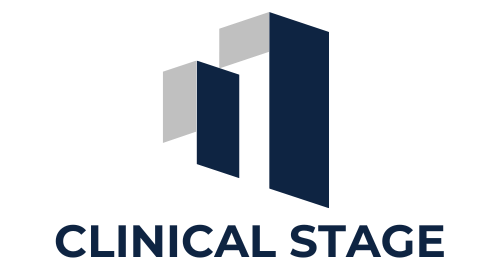Patient-Centric Approaches in Clinical Trials
Over the past few decades, clinical trials have undergone significant transformation, moving from traditional methodologies to more inclusive and innovative designs. This evolution has been driven by the need for more effective and efficient ways to bring new treatments to market while ensuring the safety and efficacy of these treatments for diverse patient populations. Central to this shift is the growing emphasis on patient-centric approaches in clinical trials.
Patient-centricity in clinical trials refers to the practice of designing and conducting research with the patient’s needs, preferences, and experiences at the forefront. This approach seeks to engage patients as active partners rather than passive subjects, ensuring that their voices are heard and their contributions valued throughout the research process.
The purpose of this blog is to explore the evolution of clinical trials towards patient-centricity, define what patient-centric approaches entail, and discuss their significance in contemporary clinical research. We will examine the benefits of these approaches, highlight successful case studies, and consider the challenges and future directions in this field.
Understanding Patient-Centric Approaches
Patient-centricity in clinical trials involves placing patients at the center of the research process, considering their needs, values, and preferences at every stage. Key principles of patient-centricity include:
- Engagement and Collaboration: Actively involving patients in the design and implementation of clinical trials.
- Transparency and Communication: Providing clear, accessible information to patients about the trial's goals, procedures, and outcomes.
- Flexibility and Adaptability: Designing trials that accommodate patients' lifestyles and minimize the burden of participation.
- Respect and Empathy: Treating patients as partners in the research process, respecting their input and addressing their concerns.
Historical Context: Traditional vs. Patient-Centric Clinical Trials
Traditionally, clinical trials were designed primarily from the perspective of researchers and sponsors, often with limited input from patients. This approach sometimes led to challenges such as low recruitment and retention rates, as well as results that were not always reflective of the patient population intended to benefit from the treatment.
In contrast, patient-centric clinical trials prioritize the patient experience. This shift began gaining momentum in the early 21st century as the industry recognized the value of patient insights in improving trial design and outcomes. Initiatives such as patient advisory boards and patient-reported outcomes (PROs) became more common, helping to bridge the gap between researchers and patients.
The Importance of Involving Patients in the Clinical Trial Process
Involving patients in clinical trials is crucial for several reasons:
- Improved Recruitment and Retention: Trials designed with patient convenience and preferences in mind are more likely to attract and retain participants.
- Enhanced Relevance and Validity: Patient input helps ensure that the trial addresses real-world needs and produces results that are meaningful to the patient community.
- Greater Trust and Compliance: Transparent communication and respectful engagement foster trust between patients and researchers, leading to higher levels of adherence to trial protocols.
- Ethical Responsibility: Respecting patients as partners in the research process aligns with ethical standards of patient autonomy and informed consent.
By embracing patient-centric approaches, clinical trials can become more efficient, effective, and aligned with the ultimate goal of improving patient outcomes.
Benefits of Patient-Centric Approaches
Improved Patient Engagement and Retention
Patient-centric approaches significantly enhance patient engagement and retention in clinical trials. By prioritizing the patient's experience and convenience, trials become more accessible and appealing to participants. Here are some strategies to increase patient involvement and commitment:
- Flexible Scheduling: Offering flexible visit schedules and remote monitoring options to accommodate patients' daily lives.
- Clear Communication: Providing easy-to-understand information about the trial, including its purpose, procedures, and potential benefits and risks.
- Patient Support Services: Offering transportation assistance, childcare, and other support services to reduce participation barriers.
Examples of Successful Patient Engagement Initiatives
- Patient Advisory Boards: Engaging patients in advisory boards to provide feedback on trial design and conduct.
- Digital Platforms: Utilizing digital platforms and mobile apps to facilitate communication, data collection, and remote monitoring.
- Community Partnerships: Collaborating with patient advocacy groups and community organizations to build trust and awareness.
Enhanced Data Quality and Relevance
Patient-centric trials yield higher quality and more relevant data by actively incorporating patient-reported outcomes (PROs) and ensuring that the trial addresses real-world patient needs.
Collecting Meaningful Patient-Reported Outcomes (PROs)
- Direct Feedback: Integrating regular PROs into the trial design to capture patients' perspectives on their symptoms, treatment effects, and overall quality of life.
- Real-Time Data Collection: Using digital tools to collect real-time data from patients, providing a more accurate and comprehensive view of their experiences.
Ensuring Trial Results are Relevant to Patient Needs
- Patient-Centered Endpoints: Defining trial endpoints that reflect outcomes important to patients, such as symptom relief, functional improvement, and quality of life.
- Tailored Interventions: Designing interventions that address the specific needs and preferences of the patient population being studied.
Ethical and Inclusive Research
Patient-centric approaches promote ethical and inclusive research by ensuring that diverse patient populations are represented and their unique needs are addressed.
Promoting Equity and Access in Clinical Trials
- Inclusive Recruitment Strategies: Implementing strategies to recruit a diverse patient population, including outreach to underrepresented communities.
- Removing Barriers: Addressing barriers to participation, such as providing language translation services, cultural competence training for researchers, and financial support for participants.
Addressing Diverse Patient Populations and Their Unique Needs
- Cultural Sensitivity: Designing trials that are culturally sensitive and respectful of different patient backgrounds and beliefs.
- Personalized Approaches: Tailoring trial procedures and interventions to meet the unique needs of different patient groups, ensuring that the benefits of clinical research are accessible to all.
By adopting patient-centric approaches, clinical trials can become more effective, ethical, and inclusive, ultimately leading to better health outcomes for all patients.
Key Components of Patient-Centric Clinical Trials
Patient Involvement in Trial Design
Involving patients in the design phase of clinical trials is crucial for creating studies that are both patient-friendly and scientifically robust. This collaboration ensures that trials are tailored to meet the real-world needs of patients, enhancing their relevance and impact.
Collaborating with Patient Advocacy Groups
- Partnerships: Building partnerships with patient advocacy groups to gain insights into the patient community’s priorities and concerns.
- Advisory Boards: Establishing patient advisory boards to provide continuous feedback and guidance throughout the trial design and implementation phases.
Incorporating Patient Feedback into Trial Protocols
- Surveys and Focus Groups: Conducting surveys and focus groups with potential trial participants to gather input on trial design, procedures, and outcomes.
- Iterative Design Process: Using an iterative design process that incorporates patient feedback to refine trial protocols and ensure they align with patient needs and preferences.
Flexible and Convenient Trial Logistics
Modern clinical trials are increasingly adopting flexible and convenient logistical approaches to reduce the burden on participants and improve their overall experience.
Decentralized and Virtual Trials
- Remote Participation: Leveraging technology to enable remote participation, including telehealth visits, digital consent processes, and home-based data collection.
- Wearable Devices: Utilizing wearable devices and mobile apps to monitor patients’ health metrics in real-time, reducing the need for frequent in-person visits.
Flexible Scheduling and Location Options
- Multiple Locations: Offering trial sites in multiple locations or allowing patients to choose the most convenient site.
- Flexible Scheduling: Providing flexible scheduling options to accommodate patients’ work and family commitments, including evening and weekend appointments.
Effective Communication and Support
Transparent and ongoing communication, along with robust support systems, are vital for maintaining patient engagement and ensuring a positive trial experience.
Transparent and Ongoing Communication with Participants
- Regular Updates: Providing regular updates to participants about the trial’s progress, any changes to the protocol, and interim findings.
- Open Channels: Maintaining open channels of communication, such as dedicated hotlines or online portals, for participants to ask questions and share concerns.
Providing Resources and Support Throughout the Trial
- Patient Education: Offering educational resources to help participants understand the trial process, potential risks and benefits, and their rights as participants.
- Emotional and Practical Support: Providing emotional support through counseling services and practical support, such as assistance with transportation or childcare, to help patients manage their participation more easily.
By integrating these key components, clinical trials can become more patient-centric, leading to higher levels of patient satisfaction, improved retention rates, and more meaningful and impactful research outcomes.
Technological Innovations Enabling Patient-Centricity
Digital Health Tools and Platforms
Technological advancements have paved the way for a more patient-centric approach in clinical trials by introducing various digital health tools and platforms. These innovations facilitate better patient engagement, real-time data collection, and more efficient trial management.
Mobile Health Applications for Patient Engagement
- Interactive Apps: Mobile health applications provide interactive platforms where patients can receive information, complete surveys, and report symptoms or adverse events in real time.
- Reminders and Alerts: These apps can send reminders for medication adherence, upcoming appointments, and other important trial-related activities, enhancing patient compliance and retention.
Wearable Devices for Real-Time Monitoring and Data Collection
- Continuous Monitoring: Wearable devices like smartwatches and fitness trackers allow continuous monitoring of vital signs and other health metrics, providing a comprehensive view of the patient's health status.
- Data Integration: Data collected from wearables can be seamlessly integrated into the trial database, allowing researchers to track patient progress and identify trends without the need for frequent in-person visits.
Telemedicine and Virtual Visits
The integration of telemedicine into clinical trials has revolutionized patient care by making remote consultations and follow-ups more accessible and convenient.
Implementing Telemedicine for Remote Consultations and Follow-Ups
- Virtual Appointments: Telemedicine enables virtual appointments, allowing patients to consult with trial investigators from the comfort of their homes, reducing travel time and associated burdens.
- Real-Time Support: Patients can receive real-time support and guidance from healthcare providers, ensuring timely intervention and addressing any concerns promptly.
Enhancing Accessibility for Patients in Remote or Underserved Areas
- Broadening Reach: Telemedicine expands the reach of clinical trials to include patients in remote or underserved areas who might otherwise be unable to participate due to geographical constraints.
- Reducing Disparities: By providing equal access to care, telemedicine helps reduce disparities in clinical trial participation and ensures a more diverse and representative patient population.
Electronic Consent (eConsent)
Streamlining the informed consent process with electronic consent (eConsent) technologies has made the process more efficient and patient-friendly.
Streamlining the Informed Consent Process with eConsent
- Digital Consent Forms: eConsent involves the use of digital consent forms that can be accessed and signed electronically, simplifying the consent process and reducing paperwork.
- Interactive Content: These platforms can include interactive content such as videos and quizzes to enhance patient understanding of the trial, its risks, and benefits.
Ensuring Comprehensive Understanding and Easy Access for Participants
- Multimedia Resources: eConsent platforms can provide multimedia resources to explain complex medical information in an easy-to-understand manner, ensuring participants fully comprehend the trial.
- Accessible Anywhere: Patients can access eConsent forms from any location and at any time, allowing them to review the information at their own pace and convenience.
The adoption of these technological innovations not only enhances patient-centricity in clinical trials but also improves the overall efficiency and effectiveness of the research process. By leveraging digital health tools, telemedicine, and eConsent, clinical trials can better meet the needs of patients, leading to higher engagement, improved data quality, and more successful outcomes.
Challenges in Implementing Patient-Centric Approaches
Cultural and Socioeconomic Barriers
While patient-centric approaches offer numerous benefits, they also present significant challenges, particularly when it comes to addressing diverse cultural and socioeconomic backgrounds.
Addressing Diverse Cultural Perspectives and Health Literacy Levels
- Cultural Sensitivity: It is crucial to design trials that are culturally sensitive and respect the diverse backgrounds of participants. This involves understanding cultural attitudes towards health, illness, and clinical research.
- Health Literacy: Varying levels of health literacy among participants can impact their understanding of trial information. Researchers need to provide clear, jargon-free explanations and use visual aids or multimedia tools to enhance comprehension.
Overcoming Socioeconomic Challenges to Participation
- Financial Support: Socioeconomic factors such as income and employment status can hinder participation. Providing financial support, such as travel stipends or compensation for time, can help mitigate these barriers.
- Community Outreach: Engaging with community leaders and organizations can build trust and encourage participation from underserved populations. Tailored recruitment strategies that address specific community needs are essential.
Technological Accessibility
Technological advancements are key to patient-centricity, but they can also create accessibility issues for some participants.
Ensuring All Participants Have Access to and Can Use Digital Tools
- Device Provision: Ensuring that all participants have access to the necessary digital tools, such as smartphones or wearable devices, may require providing these devices to those who do not own them.
- Technical Support: Offering technical support and training to participants unfamiliar with digital tools is essential to ensure they can use these technologies effectively throughout the trial.
Addressing Digital Literacy and Connectivity Issues
- Digital Literacy Programs: Implementing digital literacy programs can help participants understand how to use digital tools and platforms, ensuring they can fully engage with the trial.
- Improving Connectivity: For participants in areas with poor internet connectivity, providing solutions such as mobile hotspots or offline data collection options can ensure continuous participation.
Regulatory and Compliance Considerations
Patient-centric approaches must also navigate complex regulatory landscapes to ensure they meet all legal and ethical standards.
Navigating Regulatory Requirements for Patient-Centric Methods
- Regulatory Approval: Obtaining regulatory approval for patient-centric methodologies, such as decentralized trials and eConsent, can be challenging due to varying regulations across regions.
- Documentation and Reporting: Ensuring that all patient interactions, data collection, and trial modifications are thoroughly documented and reported to regulatory bodies is crucial for compliance.
Ensuring Compliance with Data Privacy and Security Standards
- Data Protection: Protecting patient data is paramount in patient-centric trials. Implementing robust cybersecurity measures and complying with data protection regulations like GDPR and HIPAA is essential.
- Informed Consent: Ensuring that participants fully understand how their data will be used and stored, and obtaining their explicit consent for these practices, is a key component of ethical research.
Despite these challenges, the shift towards patient-centric approaches in clinical trials represents a significant step forward in making research more inclusive, effective, and aligned with patient needs. By addressing cultural, socioeconomic, technological, and regulatory barriers, researchers can develop more patient-friendly trials that lead to better outcomes for all stakeholders involved.
Case Studies and Success Stories
Examples of Clinical Trials that Successfully Adopted Patient-Centric Approaches
Adopting patient-centric approaches in clinical trials has led to numerous success stories, demonstrating the benefits of this methodology in real-world settings. Below are three case studies that highlight the effectiveness of patient-centric trials.
Case Study 1: A Decentralized Trial for a Chronic Disease
A multinational pharmaceutical company conducted a decentralized clinical trial for a new treatment for Type 2 diabetes. The trial leveraged telemedicine, remote monitoring, and home delivery of study medications to minimize the need for in-person visits. Key aspects of the trial included:
- Remote Monitoring: Participants used wearable devices to track their glucose levels and other vital signs. Data was transmitted in real-time to the research team.
- Telehealth Consultations: Regular virtual visits with healthcare providers allowed for continuous monitoring and timely intervention without requiring participants to travel.
- Patient Support: A dedicated helpline provided technical support and answered any questions participants had about the study procedures.
Outcome: The decentralized approach resulted in higher retention rates and improved patient satisfaction. Participants appreciated the convenience and flexibility, and the trial successfully met its recruitment and retention targets ahead of schedule.
Case Study 2: Utilizing Mobile Health Apps to Enhance Patient Engagement
In a trial conducted by Notable Labs, a mobile health app was used to enhance patient engagement for a new cancer treatment. The app provided a platform for patients to receive information, report symptoms, and communicate with the research team.
- Interactive Features: The app included interactive features such as educational videos, symptom trackers, and medication reminders to keep patients engaged and informed.
- Real-Time Communication: Patients could use the app to chat with healthcare providers, report side effects, and receive instant feedback, ensuring continuous support.
- Data Integration: The app integrated seamlessly with wearable devices, allowing for comprehensive data collection and monitoring.
Outcome: The use of the mobile health app significantly improved patient adherence to the treatment protocol and enhanced data quality. Patients reported feeling more connected and supported throughout the trial.
Case Study 3: Incorporating Patient Feedback into Trial Design for a Rare Disease
A biotechnology company designing a trial for a rare genetic disorder involved patient advocacy groups and individual patients in the trial design process. Their feedback was instrumental in shaping the study.
- Patient Advisory Boards: The company established patient advisory boards to provide continuous feedback on trial design, procedures, and endpoints.
- Flexible Scheduling: Based on patient input, the trial offered flexible scheduling and location options for study visits, including home visits and local healthcare facilities.
- Tailored Communication: Educational materials and consent forms were developed in collaboration with patients to ensure they were easily understandable and culturally sensitive.
Outcome: The trial achieved higher recruitment rates and better patient retention compared to previous studies for the same condition. Participants felt their needs and concerns were addressed, leading to greater engagement and trust in the research process.
These case studies illustrate how patient-centric approaches can lead to more successful and meaningful clinical trials. By focusing on the patient's needs, preferences, and experiences, researchers can enhance engagement, improve data quality, and ultimately achieve better health outcomes. Notable Labs' innovative use of mobile health apps showcases the potential for technology to transform patient engagement and trial efficiency.
Future Trends in Patient-Centric Clinical Trials
Increasing Role of Artificial Intelligence and Machine Learning
Artificial Intelligence (AI) and Machine Learning (ML) are poised to play a significant role in the future of patient-centric clinical trials. These technologies offer innovative solutions to enhance various aspects of the trial process.
AI-Driven Patient Recruitment and Retention Strategies
- Targeted Recruitment: AI algorithms can analyze large datasets to identify and recruit patients who are most likely to benefit from and participate in specific clinical trials. This targeted approach can improve recruitment efficiency and ensure a more representative patient population.
- Retention Predictions: Machine learning models can predict which participants are at risk of dropping out based on their engagement levels and other factors. This allows researchers to implement timely interventions to improve retention rates.
Personalized Treatment Plans Based on Predictive Analytics
- Tailored Interventions: Predictive analytics can help create personalized treatment plans by analyzing individual patient data, including genetic information, medical history, and lifestyle factors. This ensures that treatments are tailored to the specific needs of each patient, enhancing efficacy and reducing adverse effects.
- Adaptive Trial Designs: AI can facilitate adaptive trial designs that dynamically adjust based on interim results and patient responses. This flexibility can lead to more efficient trials and faster time-to-market for new therapies.
Expanding Use of Real-World Evidence (RWE)
The integration of Real-World Evidence (RWE) into clinical trials is becoming increasingly important for enhancing trial relevance and outcomes.
Integrating RWE to Enhance Trial Relevance and Outcomes
- Contextual Insights: RWE provides insights from real-world clinical practice, helping to contextualize trial findings and ensure they are applicable to everyday patient care. This can improve the generalizability and impact of trial results.
- Complementary Data: Combining RWE with traditional trial data offers a more comprehensive understanding of treatment effects and patient experiences, leading to more robust and relevant conclusions.
Leveraging Patient-Generated Data for Continuous Monitoring
- Wearable Devices and Apps: The use of wearable devices and mobile health apps enables continuous collection of patient-generated data, such as physical activity, vital signs, and symptom reports. This real-time monitoring can provide valuable insights into patient health and treatment effectiveness.
- Proactive Interventions: Continuous data collection allows for proactive interventions when potential issues are detected, enhancing patient safety and trial integrity.
Global Collaboration and Standardization
Promoting international standards and collaborative efforts is essential for addressing global health disparities and ensuring the success of patient-centric clinical trials worldwide.
Promoting International Standards for Patient-Centric Trials
- Harmonized Guidelines: Developing and promoting harmonized guidelines for patient-centric trials can ensure consistency and quality across different regions and studies. This includes standardized protocols for patient engagement, data collection, and ethical considerations.
- Regulatory Alignment: Collaborative efforts to align regulatory requirements across countries can streamline the approval process for patient-centric trial methodologies, facilitating global implementation.
Collaborative Efforts to Address Global Health Disparities
- Inclusive Research Networks: Establishing inclusive research networks that bring together diverse stakeholders, including researchers, patients, advocacy groups, and policymakers, can help address global health disparities. These networks can share best practices and resources to improve trial accessibility and relevance for underrepresented populations.
- Capacity Building: Investing in capacity building in low- and middle-income countries can enhance their ability to conduct patient-centric trials. This includes training local researchers, providing technical support, and improving infrastructure.
By embracing these future trends, the field of clinical trials can continue to evolve towards greater patient-centricity. AI and ML, real-world evidence, and global collaboration are key drivers that will shape the next generation of clinical research, ensuring that trials are more inclusive, efficient, and impactful for patients worldwide.
Recap of the importance and benefits of patient-centric approaches in clinical trials
Patient-centric approaches in clinical trials represent a paradigm shift from traditional methodologies, emphasizing the importance of patient involvement and engagement. These approaches prioritize the needs, preferences, and experiences of patients, leading to numerous benefits:
- Improved Recruitment and Retention: By designing trials that accommodate patients' lifestyles and preferences, researchers can achieve higher recruitment and retention rates.
- Enhanced Data Quality and Relevance: Patient-reported outcomes and real-world evidence ensure that trial results are meaningful and applicable to real-world settings.
- Ethical and Inclusive Research: Patient-centric trials promote equity and access, ensuring diverse patient populations are represented and their unique needs addressed.
- Technological Innovations: The use of digital health tools, telemedicine, and eConsent enhances patient engagement and simplifies trial logistics.
To fully realize the potential of patient-centric approaches, it is crucial for all stakeholders—researchers, sponsors, regulators, and patient advocacy groups—to prioritize patient involvement and engagement. By doing so, we can create a more inclusive, efficient, and effective clinical research ecosystem that truly serves the needs of patients.
The future of clinical research is undoubtedly patient-centric. As we continue to embrace technological advancements and collaborative efforts, the focus on patient needs and preferences will only intensify. This shift promises to transform the clinical trial landscape, making research more accessible, relevant, and impactful.
Researchers and sponsors are encouraged to adopt patient-centric methods in their clinical trials. By integrating patient feedback, leveraging digital health tools, and embracing flexible trial designs, they can improve trial outcomes and patient satisfaction. Investing in these approaches will lead to more successful trials and, ultimately, better health outcomes for patients.
We invite all stakeholders to share their experiences and insights on patient-centric trials. Your feedback is invaluable in shaping the future of clinical research and ensuring that patient voices continue to guide our efforts. Join the conversation and contribute to the ongoing dialogue on the importance of patient-centricity in clinical trials.
By fostering a collaborative and patient-focused research environment, we can achieve significant advancements in medical science and improve the lives of patients worldwide. Together, we can build a more patient-centric future for clinical research.










